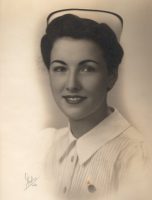Why wrapping up well is essential for nurses and beneficial to patients.
Takeaways:
- Encounter endings hold extraordinary impact when recalled.
- Nurses should equip themselves to ensure meaningful endings for patients and also themselves.


In this era of value-based care, an organization’s success hinges on patients’ perceived quality of their experience and care. Nurses are highly educated in the whys, whats, and how-tos of task completion, but we receive little guidance in the crucial impact of timing in the successful completion of patient encounters. Endings hold the power to change thinking and redirect actions. They should guide what we do and how we do it.
The peak end rule
In the early 1990s, Dr. Daniel Kahneman and his colleagues completed studies of various patient experiences during colonoscopies and other painful or unpleasant procedures. From these studies, the “peak end rule” was discovered: a person’s remembered experience is primarily determined by the moment of greatest intensity (the peak) and how the experience culminated (the end). The researchers found that shorter colonoscopies with more painful endings were recalled as being worse than longer colonoscopies that ended with less unpleasantness (even if substantially more pain was delivered throughout the entire experience).
Another experiment had participants submerge their hands into frigid water for set amounts of time. Although both trials featured 60 seconds of identical pain, the second trial added 30 seconds of reduced pain at the end (the water warmed slightly between 60 and 90 seconds). Despite similar peak pain moments (at around 60 seconds), most participants, when asked which trial to repeat, chose the longer one. Increased durations of pain were preferred when the end was more comfortable.
Patients and endings
The tendency of people to evaluate the quality of experiences by certain moments (especially the end) rather than by the full experience continues to be supported in our current healthcare climate. For example, when patients evaluate a hospital or clinic experience, ratings are likely to correlate with perceptions of treatment and care occurring at the event’s conclusion.
Nurses must be aware of the powerful impact that endings—whether physical, psychological, or both— have on human opinion and subsequent decisions. Consider this scenario: A nurse caring for a pediatric patient undergoing a painful procedure helps to ensure reduced pain to the greatest extent possible throughout the procedure and at the end. Could these actions positively affect patient and family adherence to future healthcare treatments and recommendations and influence health trajectories? Consider also the impact that appropriate nursing follow-up procedures (via telephone, secure healthcare portal, or home visits) may have on a patient discharged from the hospital or clinic after a bad experience. These strategies can ensure that patients who left the hospital unclear about next steps still have a positive ending experience related to their hospital stay. (See Practical tips for a positive ending.)
Practical tips for a positive endingTo ensure a positive ending to a patient encounter, consider these suggestions:
|
Good news or bad news?
When given a choice between receiving good or bad news first, most patients choose bad news, even though those delivering the news typically want to start with the good. In other words, patients prefer happy endings. They want the sequence of events to rise rather than fall. Use this knowledge to help you understand human behavior and improve patient interactions. Consider starting with the negative aspects of a procedure or intervention and then share the benefits, or at least be sure to end with some benefits.
The power of poignancy
Endings help people rate and recall experiences. Although most people prefer to save the good news for last, they long for something more complex than happiness in the end. They seek poignancy—a meaningful mixture of some component of sadness with an otherwise happy moment. Poignancy elevates perception rather than diminishes it. It’s been directly linked to the experience of endings, offering richness, transcendence, unexpected insight, or determination to lose what is wanted in pursuit of what is needed. I learned more about this concept while reading a clinical reflection written by a nurse practitioner student I had the privilege to precept. (See Poignant care.)
Poignant careA nurse practitioner student, near the end of her clinical experience, wrote about the poignancy of nursing.
“I have had a colossal paradigm shift. The things I have learned thus far in family medicine are invaluable. I have learned humility from the 50-year-old man who hugged me after we just diagnosed him with diabetes. I have learned about the power of love from an 80-year-old woman who just lost the love of her life and was completely devastated. I have learned about the unpredictability of life from the stressed-out and highly anxious army wife whose husband is about to deploy, leaving her alone with four children. I have learned about the importance of touch from a woman with neurofibromatosis that covers every inch of her body. She needed help washing her back because she can’t reach it and lives alone. “My preceptor reminds me every day that we don’t work at a factory where we can just rush from patient to patient. These patients are real people with real problems who need help. Primary care is so much more than managing acute and chronic illnesses and writing prescriptions. It is about providing excellent care for your community, which trusts you with its collective health and wellness.” |
When recalling the appointments this student wrote about, I was struck by the thread of poignant endings woven into each encounter. For example, the patient who stood and hugged the student after being diagnosed with diabetes had told us about his newfound clarity. What mattered to him had been illuminated through collaboratively constructed goals to parallel his personal desires. He was empow ered to pursue meaningful change at the end of our time together. At subsequent follow-up, his diabetes had improved dramatically.
Optimal endings can help energize us to push a little harder to reach our goals. The profound influence of endings (good, bad, or poignant) on experiences and decision-making warrants nurses’ thoughtful and ongoing consideration.
Elevating our work endings
How can nurses elevate their own professional endings? After caring for patients, students, and colleagues, many of us have a tendency to race away from our work sites to meet other personal demands. However, science suggests that our time at work should conclude with deliberate actions that bring the day’s efforts to a fulfilling close.
One of the biggest day-to-day contributors to on-the-job motivation is awareness of progress. If nurses are unaware of their accomplishments, they may miss the benefits of this powerful daily motivator. Nurses also should tap into gratitude at the end of the work day. Offering thanks can be a potent restorative and reminds us why we entered nursing and why we stay. Take 5 minutes at the end of your workday to complete these final acts:
- Find a quiet area.
- Reflect on progress and accomplishments you’ve made during your workday.
- Write down these accomplishments (on paper or electronically).
- Lay out a plan for the next workday or shift.
- Take a final moment to send someone a thank-you note, email, or text message.
When nurses construct endings that elevate, a mutual nurse-patient benefit will likely result. This will require us to think creatively. We must look for ways to critically appraise and challenge the stereotypical experiences of our current work settings because at the core of the human condition is a quest for meaning. Especially at the end.
Jayne Jennings Dunlap is a family nurse practitioner in Texas.
Selected references
Fredrickson BL. Extracting meaning from past affective experiences: The importance of peaks, ends, and specific emotions. Cogn Emot. 2000; 14(4):577-606.
Heath C, Heath D. The Power of Moments: Why Certain Experiences Have Extraordinary Impact. New York, NY: Simon & Schuster; 2017.
Kahneman D, Fredrickson BL, Schreiber CA, Redelmeier DA. When more pain is preferred to less: Adding a better end. Psychol Sci. 1993;4(6):401-5.
Koo M, Fishbach A. Dynamics of self-regulation: How (un)accomplished goal actions affect motivation. J Pers Soc Psychol. 2008;94(2):183-95.
Pink DH. When: The Scientific Secrets of Perfect Timing. New York, NY: Riverhead Books; 2018.
Redelmeier DA, Kahneman D. Patients’ memories of painful medical treatments: Real- time and retrospective evaluations of two minimally invasive procedures. Pain. 1996;66(1):3-8.
ant2-Endings-117



















